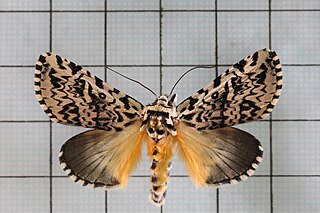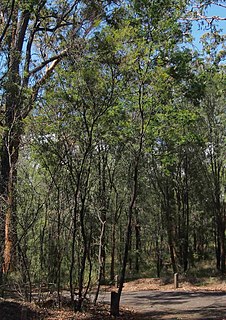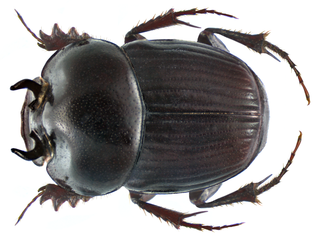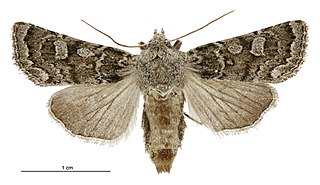
The crested serpent eagle is a medium-sized bird of prey that is found in forested habitats across tropical Asia. Within its widespread range across the Indian Subcontinent, Southeast Asia and East Asia, there are considerable variations and some authorities prefer to treat several of its subspecies as completely separate species. In the past, several species including the Philippine serpent eagle, Andaman serpent eagle and South Nicobar serpent eagle were treated as subspecies of the Crested serpent eagle. All members within the species complex have a large looking head with long feathers on the back of the head giving them a maned and crested appearance. The face is bare and yellow joining up with the ceres while the powerful feet are unfeathered and heavily scaled. They fly over the forest canopy on broad wings and tail have wide white and black bars. They call often with a loud, piercing and familiar three or two-note call. They often feed on snakes, giving them their name and are placed along with the Circaetus snake-eagles in the subfamily Circaetinae.

The Lauxaniidae are a family of acalyptrate flies. They generally are small flies with large compound eyes that often are brightly coloured in life, sometimes with characteristic horizontal stripes, such as in Cestrotus species. Many species have variegated patterns on their wings, but in contrast they generally do not have variegated bodies, except for genera such as Cestrotus, whose camouflage mimics lichens or the texture of granitic rocks.

Trichosea champa is a moth of the family Noctuidae first described by Frederic Moore in 1879. It is found in the Himalayas, north-east India, Sri Lanka, China, Taiwan, Japan, and Russia.

Sabatinca demissa is a species of moth belonging to the family Micropterigidae. It is endemic to New Zealand and is found in the northern half of the North Island. The larvae of this species is small in size and is coloured pale green with darker green or black patches on the rear of its body. The adult moth is coloured yellow-brown with black dots on its forewings. It is a small moth with a wingspan of approximately 6.5 mm in length. Unlike many species of moth is does not have a pheromone communication system. The adults of the species are on the wing from November to January. The larvae of this species feed on leafy types of liverwort. The adults of this species feed on the spores of fertile cones of Lycopodium volubile and Lycopodium scariosum.

Izatha copiosella is a moth of the family Oecophoridae. It is endemic to New Zealand, where it is found on the south-eastern parts of the North Island and throughout the South Island except the West Coast. Larvae are found in dead wood and are likely to use kōwhai species as hosts. The adults are night fliers and are attracted to light. They are on the wing in January and February.

Haemadipsa picta is a large terrestrial leech found in Borneo, Indochina, and Taiwan. It was described by John Percy Moore based on specimens collected from Sarawak, Borneo. It preys primarily on medium- to large-sized mammals, including humans.

Acacia yorkrakinensis is a shrub belonging to the genus Acacia and the subgenus Juliflorae that is native to Western Australia.

Baikuris is an extinct genus of ant in the Formicidae subfamily Sphecomyrminae, and is currently placed in the tribe Sphecomyrmini. The genus contains four described species: the type species Baikuris mandibularis, along with Baikuris casei, Baikuris maximus, and Baikuris mirabilis.

Chamaemyia is a genus of flies in the family Chamaemyiidae. It is the type genus of its family.

Acacia storyi, commonly known as Story's wattle, is a species of Acacia of the subgenus Botrycephalae that is native to eastern Australia. It is listed as near threatened according to the Nature Conservation Act 1992 of Queensland.
Chamaemyia nigripalpis is a species of fly in the family Chamaemyiidae. It is found in the Great Britain. Its body length is about 2.5 mm (0.10 in). The type series was collected from a patch of Calamagrostis epigejos where it was repeatedly observed through May to August.
Chamaemyia paludosa is a species of fly in the family Chamaemyiidae. It is found in Europe and North America. Its body length is about 3 mm (0.12 in).

Hypericum sampsonii is a species of flowering plant in the St. John's wort family, Hypericaceae. It occurs in China, Taiwan, Japan, Myanmar, and Vietnam. It is one of two species of Hypericum in the section Hypericum sect. Sampsonia.

Acacia torringtonensis is a shrub belonging to the genus Acacia and the subgenus Phyllodineae native to eastern Australia.
Margarinotus taiwanus is a species of clown beetle in the family Histeridae. It is endemic to Taiwan.

Hylaeus relegatus, also known as the Māori masked bee, is a bee species in the family Colletidae. It is endemic to New Zealand and was first described by Frederick Smith. It is the largest and most common species of this genus in that country. H. relegatus can be found throughout the three main islands of New Zealand and visits the flowers of a wide variety of plant species, both native and introduced. Although widespread, this species is not abundant at any one particular location. It has been hypothesised that human made nest sites can be used to increase its numbers.

Onthophagus quadridentatus, is a species of dung beetle found in India, Sri Lanka, Pakistan and Taiwan.

Ichneutica sistens is a moth of the family Noctuidae. This species is endemic to New Zealand. It can be found in the central North Island and throughout the South Island, although it is more common on the eastern side of that latter Island. It is very variable in both colour and size. I. sistens prefers open habitat such as tussock grasslands, dunes and braided rivers. Larval host species include grasses in the family Poaceae and include species in the genera Rytidosperma and Elymus, as well as Poa cita and Agrostis capillaris. Adults are on the wing from January to May and are attracted to light.
Callispa nigricornis, is a species of leaf beetle found in Sri Lanka.
Sphegina apicalis is a species of hoverfly in the family Syrphidae found in Taiwan.















